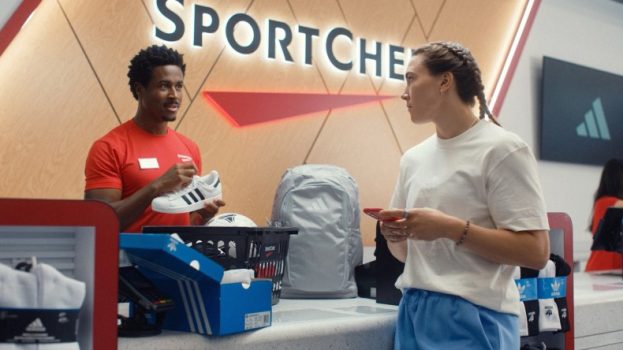Retail analyst Richard Talbot bought his digital camera many months ago, but he has yet to crack the little book that explains it. So he probably isn’t fully aware of the camera’s cool capabilities.
He isn’t alone: James Hardcastle, director of business development at Vancouver-based Best Buy, says consumers tend to use no more than 25% of the functions of any given tech product. Others stick to their old point-and-shoots because they are so intimidated, not only by the digital apparatus, but by that little book that comes with it.
Marketers like Best Buy, Sony and Maytag see this as an opportunity to grow their market and are answering the call with a retro concept that may revolutionize how certain product is sold in this country. It’s a simple idea that can overcome the consumer’s hesitancy: Retailers are showing shoppers how everything works right there on the retail floor.
It’s a damn smart move, says Unionville, Ont.-based Talbot. ‘You can give people an [instructional] video, but nothing is better than having someone demonstrate and explain as they go,’ he says.
This is especially true in today’s high-tech society, which has heightened people’s perplexity, he adds, pointing out ‘most of these products aren’t cheap. You’re not going to gamble money on something that maybe doesn’t work.’
With that in mind, Sony Canada is taking steps to hand-hold customers a heck of a lot more. The Toronto company is re-engineering its stores to have more of a ‘solution-oriented look,’ says John Challinor, GM of advertising and corporate communications.
‘Solution stations,’ dedicated to digital camera, portable audio, personal computer and TV technology, will be erected in about 25 stores by year’s end. (Sony has 71 locations across the country.) For example, shoppers can learn on-site how to retrieve a print from their digital camera via a personal computer.
‘Increasingly, people want to know how the entire system works,’ says Challinor. ‘The best thing you can do is teach them how to use the equipment, and remove the mystery and fear.’
Developed by Sony’s retail group in Canada because ‘customers were asking for it,’ the new pods have boosted sales activity, says Challinor. They are also a natural addition to Sony’s monthly interactive seminars, which have run for several years with the objective of informing consumers about the latest gadgets.
Best Buy is following suit, on a somewhat larger scale, with its month-old ‘tech zones’ and ‘discovery clinics.’ There are two programs, respectively called Best Buy for Work and Best Buy for Home. For the latter, there are five zones – digital photos, movies, music, living rooms, and wireless tech.
Explains Best Buy’s Hardcastle: ‘It comes down to the fact that technology is more
pervasive in people’s lives and more complicated than ever. There’s some education necessary.’
That’s where the ‘discovery clinics,’ scheduled to run six times a week, come in. Staffers have been trained to be experts on technology, according to Hardcastle, who says the retailer looked at Home Depot for inspiration. ‘They have plumbers and ex-tradespeople on staff. We want to build that level of competency in our staff.’
Best Buy has also debuted its ‘Geek Squad,’ a team that takes to the streets in ‘geekmobiles’ to make house calls. All facets of the new retail strategy are being communicated in flyers, newspaper inserts and radio advertising.
It’s definitely working. After running a pilot in eight locations spread between Ontario, Alberta, Manitoba and B.C., sales in tech zone stores were up between 7% and 10%, while loyalty scores were 10% to 15% higher than average. And Best Buy was getting 20 to 30 people to its clinics, a number that was much higher than expected, says Hardcastle. ‘When we did the pilot, the clinics weren’t a major focus, but in the new, refined initiative, we made them front and centre.’
The changes are the result of feedback from surveys that Best Buy conducts with 200,000 consumers on an ongoing basis. ‘The idea came from a number of folks in the organization, who identified [gaps and asked] how we can better address customer needs,’ says Hardcastle.
Not all new retail demo initiatives are tech driven. At Maytag Canada’s three stores (two in the Toronto area and one in Vancouver) you can actually wash a load of sheets. You can also cook a steak to see how quickly a stovetop heats up or run a loaded dishwasher to test how quiet it is.
These concept stores, which launched three years ago, have always been hooked up for demonstrations, says Burlington, Ont.-based brand manager Scott Ride. But Maytag also plans to increase its presence, with 10 such locations up and running by the end of 2005.
There isn’t much promotion around appliance testing, says Ride, although some stores, such as one in Mississauga, Ont., hang signs suggesting patrons ‘try before you buy.’ The results speak for themselves. Same-store sales in GTA locations are up 20% over last year.
Ride says the strategy simply makes sense and that it isn’t much different than the one perfected by car manufacturers long ago. After all, logic suggests a red-blooded male isn’t likely to buy that hot-rod sports car before he can take it out for a spin. Well, with today’s ultra-futuristic appliances, such as the Neptune Drying Center, which sort of looks like an oven for garments, the same is true.
‘It’s a great way to differentiate yourself from the competition, not just in [the appliance] industry, but in many,’ says Ride. ‘If you were to buy a $1,500 dryer, would you want to see it plugged in and working so that you can find out how loud it is, or would you rather read that from a brochure?’






















